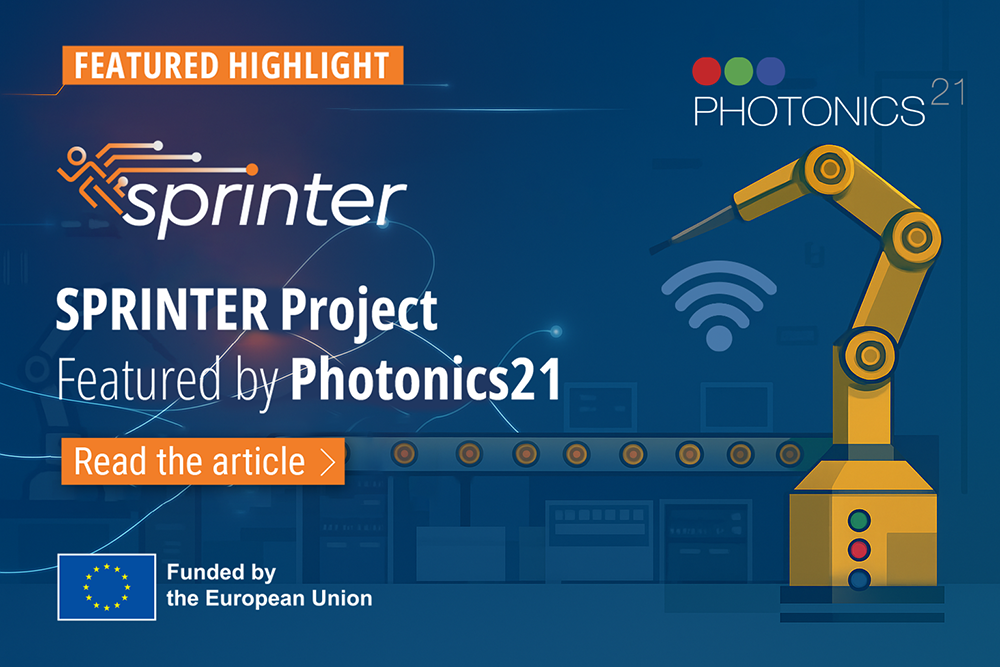We ‘re excited to announce that the SPRINTER Project was selected to be showcased by Photonics21, a major European platform promoting innovation in photonics. As part of this feature, Efstathios Andrianopoulos, Maria Massaouti and Costis Christogiannis gave an interview about the project, sharing insights into its goals and impact.
SPRINTER is working on the development of advanced networks for future smart manufacturing aiming to build a super-fast, energy-efficient industrial internet combining laser-based communication and advanced wireless technology. The project is funded by the European Commission through a €6 million grant under the Horizon Europe programme .
Today’s factories rely on a patchwork of copper cables, conventional Wi-Fi, and outdated switching systems that are too slow and inefficient for the demands of Industry 5.0. SPRINTER aims to replace decaying infrastructure with laser-driven, high-speed optical and hybrid wireless communication systems, capable of delivering reliable, real-time connections between machines, rooms, and even entire industrial buildings.
“Industry 5.0 demands faster, smarter, and more robust networks,” says Efstathios Andrianopoulos of PCRL, the project coordinator. “Our goal is to make Europe the world leader in industrial photonics — providing the tools to support the next generation of automation, robotics, and intelligent systems.”
SPRINTER’s technological focus is centered on four key prototypes:
- Ultra-fast 200 Gb/s optical transceivers – designed for high-capacity core networks.
- Hybrid free-space optical and mmWave transceivers – ensuring robust wireless connections in harsh industrial environments.
- Wavelength-tuneable 10 Gb/s transceivers – capable of dynamically adapting to network demands in real time.
- A Reconfigurable Optical Add-Drop Multiplexer (ROADM) – optimised for space-division multiplexing to intelligently route data and improve network reliability.
By combining these innovations, SPRINTER is developing a unified communication platform able to support time-sensitive networking where even millisecond delays can disrupt automation.
“Factories are full of moving parts, dust, and interference — a nightmare for traditional WiFi,” says Efstathios Andrianopoulos. “That’s why we’re developing hybrid transceivers that combine laser and radio technologies: to maintain wireless links, even in the noisiest, most chaotic settings.”
These innovations will support the real-time communication needed for next-gen factories, where even small delays can cause big problems.
Click here to read the full article by Photonics21.

